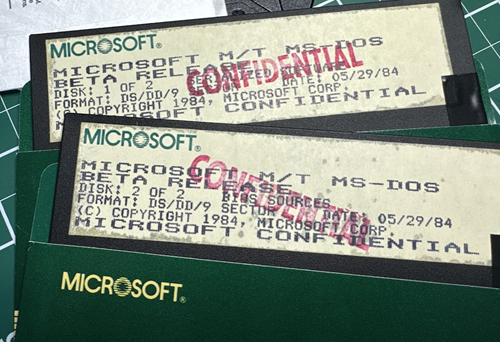
 See the canonical version of this blog post at the Microsoft Open Source Blog!
See the canonical version of this blog post at the Microsoft Open Source Blog!
Ten years ago, Microsoft released the source for MS-DOS 1.25 and 2.0 to the Computer History Museum, and then later republished them for reference purposes. This code holds an important place in history and is a fascinating read of an operating system that was written entirely in 8086 assembly code nearly 45 years ago.
Today, in partnership with IBM and in the spirit of open innovation, we’re releasing the source code to MS-DOS 4.00 under the MIT license. There’s a somewhat complex and fascinating history behind the 4.0 versions of DOS, as Microsoft partnered with IBM for portions of the code but also created a branch of DOS called Multitasking DOS that did not see a wide release.
https://github.com/microsoft/MS-DOS
A young English researcher named Connor “Starfrost” Hyde recently corresponded with former Microsoft Chief Technical Officer Ray Ozzie about some of the software in his collection. Amongst the floppies, Ray found unreleased beta binaries of DOS 4.0 that he was sent while he was at Lotus. Starfrost reached out to the Microsoft Open Source Programs Office (OSPO) to explore releasing DOS 4 source, as he is working on documenting the relationship between DOS 4, MT-DOS, and what would eventually become OS/2. Some later versions of these Multitasking DOS binaries can be found around the internet, but these new Ozzie beta binaries appear to be much earlier, unreleased, and also include the ibmbio.com source.
Scott Hanselman, with the help of internet archivist and enthusiast Jeff Sponaugle, has imaged these original disks and carefully scanned the original printed documents from this “Ozzie Drop”. Microsoft, along with our friends at IBM, think this is a fascinating piece of operating system history worth sharing.
Jeff Wilcox and OSPO went to the Microsoft Archives, and while they were unable to find the full source code for MT-DOS, they did find MS DOS 4.00, which we’re releasing today, alongside these additional beta binaries, PDFs of the documentation, and disk images. We will continue to explore the archives and may update this release if more is discovered.
Thank you to Ray Ozzie, Starfrost, Jeff Sponaugle, Larry Osterman, our friends at the IBM OSPO, as well as the makers of such digital archeology software including, but not limited to Greaseweazle, Fluxengine, Aaru Data Preservation Suite, and the HxC Floppy Emulator. Above all, thank you to the original authors of this code, some of whom still work at Microsoft and IBM today!
If you’d like to run this software yourself and explore, we have successfully run it directly on an original IBM PC XT, a newer Pentium, and within the open source PCem and 86box emulators.
About Scott
Scott Hanselman is a former professor, former Chief Architect in finance, now speaker, consultant, father, diabetic, and Microsoft employee. He is a failed stand-up comic, a cornrower, and a book author.
